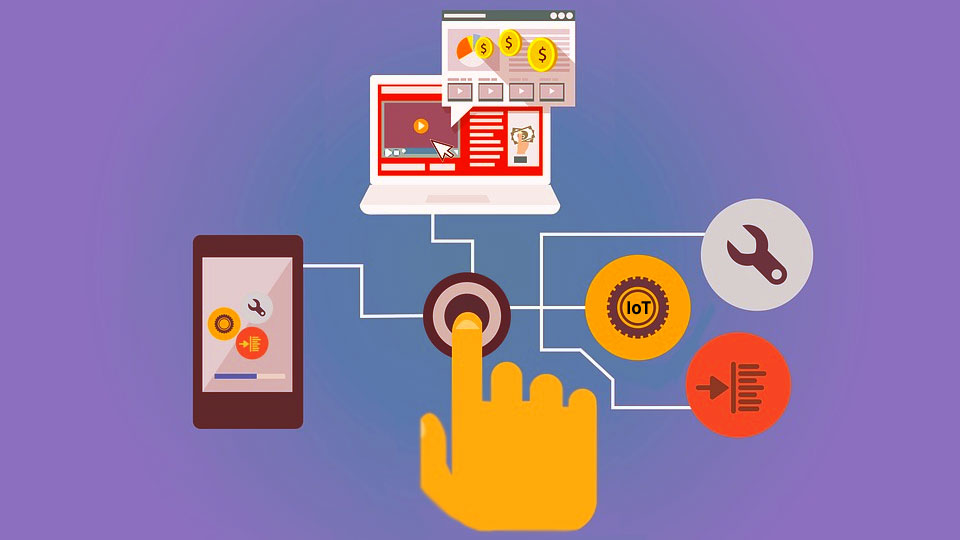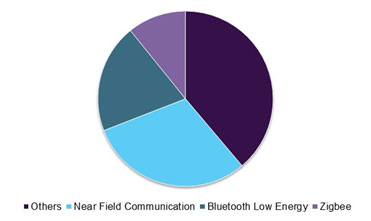
Interventions in the retail industry have been accelerated by new entrants and massive digital transformation over the decade. Retailers are capitalizing on the growing connected market as several vendors are offering IoT ecosystems that provide retailers with a wide array of devices through a single platform. According to Grand View Research, the IoT in retail market is expected to reach USD 94.44 billion by 2025. The increasing IoT spending in retail sectors for the purpose of product monitoring, premises monitoring, supply chain monitoring, and customer monitoring is driving the demand for IoT-based solutions.
Notable Trends-IoT in Retail
The retail landscape has experienced a seismic shift with the evolution of Artificial Intelligence (AI) and Augmented Reality (AR) in retail stores. The retailers use AI to understand the buying patterns of old customers, dig out the target audience, and offer customized product ads to their customers. Moreover, AI has shown its conventional capability for conversational commerce, as retailers are incorporating chatbots with messaging applications, allowing users to interact with their brand.
IoT in retail has enabled retailers to set up an automated checkout system using IoT devices. The automated checkout systems contribute to high customer satisfaction, resulting in higher footfalls especially during a time crunch. For instance, Nayasale Retail Pvt Ltd., an Indian start-up is a fully AI-powered autonomous retail store in Kerela, which features an automated checkout system, eliminating the presence of any cashiers or salespersons.
Furthermore, retailers are using Graphics Processing Unit (GPU) computing to visualize large data sets, shorten the data processing time for analytics tasks, and to discover patterns that can reveal new insights in less time. Solution providers such as Revionics, Kinetica DB Inc., and OmniSci, Inc. offer predictive analytics and machine learning software, which help retailers optimize their pricing, promotions, and markdowns.
The retailers have replaced paper labels with advanced technologies such as smart shelves and digital displays, thereby digitizing the retail arena. Smart shelves have the capability to monitor the data pertaining to the items placed on them and send real-time updates to the retailer for restocking the shelves as and when required. The smart shelves also help the retailers in tracking the misplaced items, display pricing, and identify the customer interest. For instance, the Kroger Co. has deployed Enhanced Display for Grocery Environment (EDGE), which relies on Microsoft Azure, to process and store volumes of data generated by customer actions around the smart shelves.
Technology Trends
Robots are gradually making their way in the retail space, which are typically used for improving a customer’s in-store experience, logistics-related tasks and improving the operational efficiency of the store. For instance, In October 2017, Walmart Inc., deployed 50 Bossa Nova’s robots in the U.S. to check misplaced items, incorrect prices, and missing product labels. Furthermore, “Lowe’s” a California-based retail store, introduced LoweBot, an autonomous retail robot, which interacts with the in-store customers to help them find goods and related information. More examples of robots introduced at various retail chains are as follow:
- Target Corporation-Tally by Simple Robotics
- SoftBank Group-Pepper
- Best Buy-Chloe Robot
- Domino’s Pizza, Inc.-Domino’s Robotic Unit (DRU) Delivery Robot
The chart below depicts market share of various technologies such as Bluetooth Low Energy (BLE), Near-Field Communication (NFC), Zigbee, and other technologies (Wi-Fi and real-time location systems) in IoT in retail market.

Technology Scope-IoT in Retail Market, 2018 (%) - Source: Grand View Research
Beacon technology is extensively used at the retail stores to create a seamless and cross-channel shopping experience inside the stores. The technology is gaining prominence among retailers in post-payments, pre-tailing, and payment operations. Retailers are using Bluetooth Low Energy (BLE) to offer product information, welcome information, coupons, offers and advertisements when customers enter the store. Moreover, retailers conduct beacon analytics with the data collected by the beacons, to make improvements in the store layout, maintain service standards and operations, thereby benefiting both the retailer and the customers.
Although beacon technology remains popular among the retailers, Near Field Communication (NFC) has emerged as a prevalent tool for transforming the customer’s shopping experience and gathering customer insights. Retailers are embedding shelf tags and packages & products with NFC chips, enabling two-way communication between those items and customers NFC capable smartphones. Moreover, NFC technology allows customers to decide when and how to interact with the store’s smart packaging or displays. In 2018, Carrefour S.A. launched Carrefour Pay, an NFC mobile payments services where customers can pay for their shopping at all terminals which have NFC contactless technology.
IoT Retail in Action
IoT in retail is a relationship between harnessing detailed volumes of customer data, enabling retailers to keep in track the customer’s requirements and also timely restock their store. Mentioned below are few use cases of IoT retail technology in action:
| No. | Retail Store | IoT Solution | Description |
| 1. | Amazon Go |
| There are tags on the products, baskets, and store entrance, are read automatically by the peripheral technology. |
| 2. | The Dandy Lab |
|
|
| 3. | Levi Strauss & Co. |
|
|
| 4. | Starbucks Corporation |
| The beacons push notifications on the newest brews in-store as well as send out personalized promotions to persuade customers |
| 5. | Sephora USA, Inc. |
|
|
| 6. | Macy’s Inc. |
| Beacon technology pushes notifications to customers, making them aware of the various offers |
| 7. | REBECCA MINKOFF |
|
|
| 8. | Mastercard Incorporated and Swarovski AG |
|
|
Takeaway
Internet of Things has become a complete ecosystem where cloud computing, software, and analytical tools are turning raw data into meaningful information. IoT is enabling the retailers to offer a differentiated in-store experience thereby creating a room for increased footfalls. Inventory management for a retailer has always emerged as a challenge. However, IoT has improved inventory management in retail by bringing real-time visibility of inventory thereby reducing both overstock and out-of-stock issue.
IoT has created opportunities for e-commerce players such as Amazon.com, Inc. and Alibaba Group Holding Limited to enter the brick & mortar stores, to offer a connected store experience to the customers. For instance, Amazon Go, facilitates the customers to pick their choice of items and use the automated checkout system. The Amazon Go store relies on weight sensors and cameras to understand the items picked by the shoppers.
One Liner Summary
The IoT in retail is of a transformative potential which has automated merchandising, optimized supply chain, and offered personalized marketing experience.
Author’s Bio: Siddhesh Palsule
Designation: Team Lead
Domain: Information, Communication and Technology (ICT) and Consumer Goods
Siddhesh is a lead analyst & consultant in Grand View Research, Inc. having an experience of more than 4 years in the consumer electronics, next-generation technologies, and ICT domain. He has worked on more than 50 assignments and consult projects in the field of next-generation technology across the value chain.
Previously, he has worked in the R&D team of an embedded systems and power electronics firm, wherein he was a part of a team which dealt with the development and manufacturing of a high-frequency sine-wave inverter. He was also involved in the marketing and system integration of inverters.
He has significant experience in client interfacing, project management, project execution as well as team management.
He holds a Bachelors degree in Electronics & Telecommunication Engineering and an MBA in Marketing.
 Samsung Galaxy S10 Plus
Samsung Galaxy S10 Plus  Google Pixel 9a
Google Pixel 9a  Huawei P40 Lite E
Huawei P40 Lite E Samsung Galaxy A04e
Samsung Galaxy A04e  Samsung Galaxy Note 7
Samsung Galaxy Note 7  Google Pixel 6a
Google Pixel 6a 

